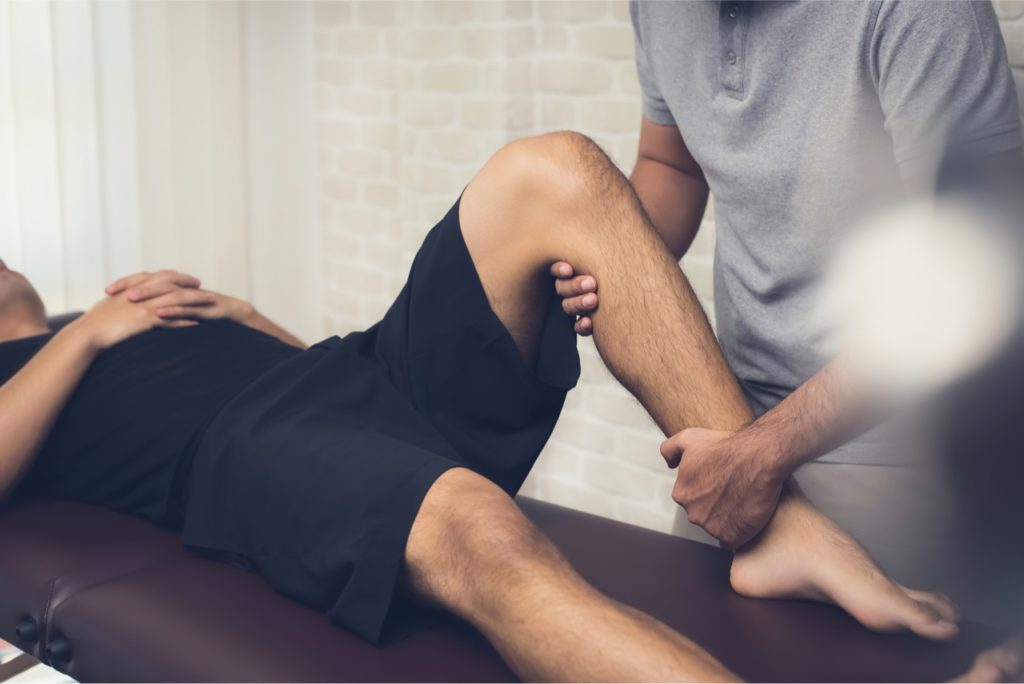As the largest joint in the body, the knee is essential to many basic activities, including walking, playing sports, and simply sitting down. Since the knee is so intrinsic to our mobility, however, it’s much more prone to injury than other joints in the body — making proper care all the more important.
To help you better understand the conditions that can affect your knees, we’ve compiled an in-depth look at the six most common injuries and their treatments.
1. MENISCAL TEARS
The meniscus is a thin strip of cartilage that serves to cushion the knee joint. When torn or ruptured — usually due to athletic injury — patients can experience a variety of symptoms, including pain, swelling, tenderness, and a limited range of motion. Meniscus tears rarely heal by themselves, but arthroscopic surgery is necessary only for the most severe tears, since most respond quite well to physical therapy and other conservative treatments.
2. ACL INJURIES
The ACL (anterior cruciate ligament) is one of several ligaments that stabilize the knee. Since it’s often torn after a sudden shift of force or direction, ACL tears are particularly common among professional athletes. A partial or complete tear will be accompanied by heavy pain, severe swelling, instability in the knee, and, in some cases, a distinctive popping sound and a buckling of the knee. Treatment depends on the severity of the injury. Partial tears in less active patients can be treated conservatively, but more active patients with partial or complete tears will need arthroscopic surgery to completely regain function.
3. FRACTURES
The knee joint is comprised of three bones: the femur (the thigh bone), the tibia (the shin) and the patella (the kneecap). Any of these bones can fracture, usually after a fall, motor vehicle accident, or indirect trauma. A break in any bone can result in debilitating pain, swelling, and difficulty walking and straightening the knee.
Treatments for knee fractures depend on the severity of the injury. Stable fractures will heal by themselves after several weeks or months in a cast or splint, but displaced fractures generally need to be treated with surgery to ensure that the bones are properly reset. Both types of treatment should be followed by an extensive physical therapy program designed to strengthen the joint and restore its full range of motion.
4. DISLOCATIONS
A patellar dislocation occurs when the patella is dislodged from the trochlea, a groove at the bottom of the femur. It can be an acute or chronic injury, causing severe pain and swelling, a visible protuberance on the knee, and a limited range of motion. Treatment varies greatly depending on the severity of the dislocation. Many patellar dislocations, for example, can be stabilized with a brace and rested until swelling subsides, but a repeatedly dislocated patella may require surgery.
5. OSTEOCHONDRITIS DISSECANS
Osteochondritis dissecans is a cracking or fracturing of the cartilage lining the end of a bone, as well as the bone underneath it. It can occur in any joint, but it’s particularly common in the knees, where it hastens degeneration of the joint by increasing friction between the cartilage and the bone. Treatment usually depends on the condition’s progression. If the patient isn’t suffering from loose bodies in the joint, simply immobilizing the knee until any damage has healed can provide significant relief, but in other cases, surgery might be needed to mend any lesions in the cartilage or bone and prevent further damage.
6. TENDON TEARS
The patellar tendon connects the muscles in the thigh to the patella, enabling you to flex and straighten your knee. It may be ruptured after sustaining strong, direct force, tearing most often in response to a fall or an awkward landing. Several common conditions, such as patellar tendonitis, may weaken the tendon and make it more susceptible to tearing. Partial tears to the patellar tendon may be treated conservatively with bracing and physical therapy, but complete tears generally require surgery to be repaired.
Athletes and non-athletes alike can suffer knee injuries, greatly impeding their ability to engage in physical activity or even normal day-to-day tasks. If you’re looking to resolve your knee pain, our staff at New York Bone and Joint has extensive experience with every major knee condition, and stands ready to help you at every stage of your path to recovery. Call today to schedule a consultation!




